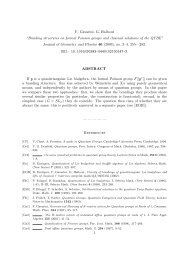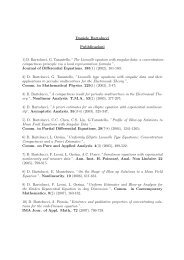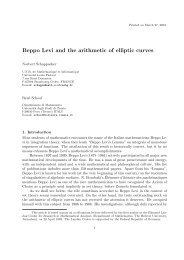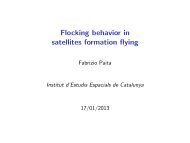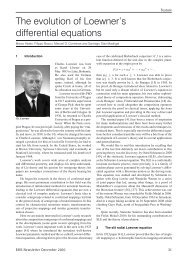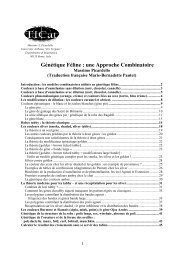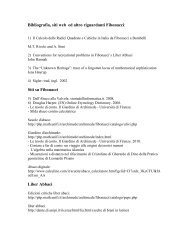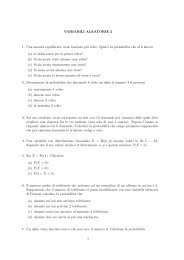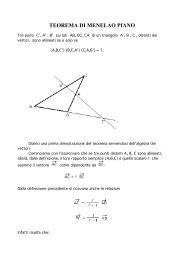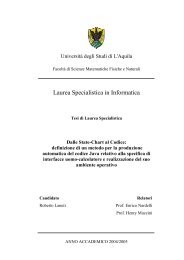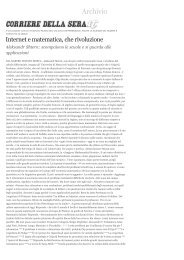Onde e Calore - Dipartimento di Matematica
Onde e Calore - Dipartimento di Matematica
Onde e Calore - Dipartimento di Matematica
You also want an ePaper? Increase the reach of your titles
YUMPU automatically turns print PDFs into web optimized ePapers that Google loves.
Paolo Perfetti, <strong>Dipartimento</strong> <strong>di</strong> matematica, II Università degli Stu<strong>di</strong> <strong>di</strong> Roma, facoltà <strong>di</strong> Ingegneria<br />
Dalla successione {b k } si costruisce u(x, t) ed a causa della risonanza la soluzione non è limitata<br />
per t → +∞.<br />
9. Esempio 3<br />
Risolvere l’equazione:<br />
u t − u xx = sin x, 0 < x < π, t > 0<br />
u(x, 0) = 0, 0 ≤ x ≤ π<br />
u(0, t) = 0, u(π, t) = 0, t ≥ 0<br />
Come al solito la soluzione è espressa come u(x, t) =<br />
+∞<br />
k=1<br />
u ′<br />
k + k2 u k ) sin kx = sin x =⇒<br />
u k (t) = u k (0)e −k2 t , u1 (t) = u 1 (0)e −t + 1.<br />
u(x, 0) = (1 + u 1 (0)) sin x +<br />
Alla fine abbiamo<br />
+∞<br />
k=1<br />
u k (t) sin kx da cui<br />
u ′<br />
k + k2 u k = 0 k = 1,<br />
u ′<br />
1 + u1 = 1<br />
u(x, t) = (1 + u1 (0)e −t +∞<br />
) sin x + uk (0)e −k2t sin kx<br />
+∞<br />
k=1<br />
k=1<br />
u k (0) sin kx = 0 =⇒ u 1 (0) = −1, u k (0) = 0, k = 1<br />
u(x, t) = (1 − e −t ) sin x−−−−→ t→+∞ sin x<br />
21/novembre/2010; esclusivamente per uso personale, è vietata ogni forma <strong>di</strong> commercializzazione 19<br />
(9.9)



